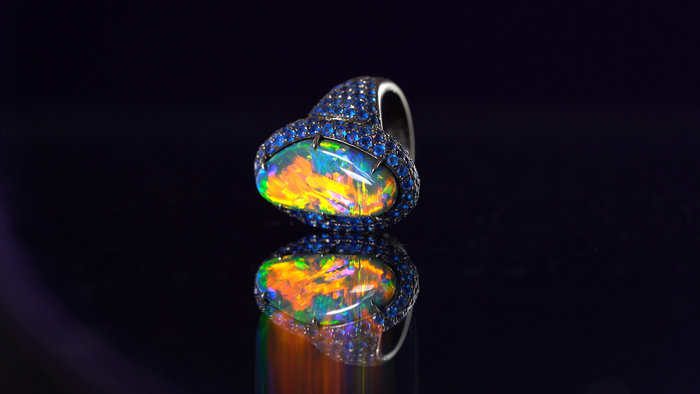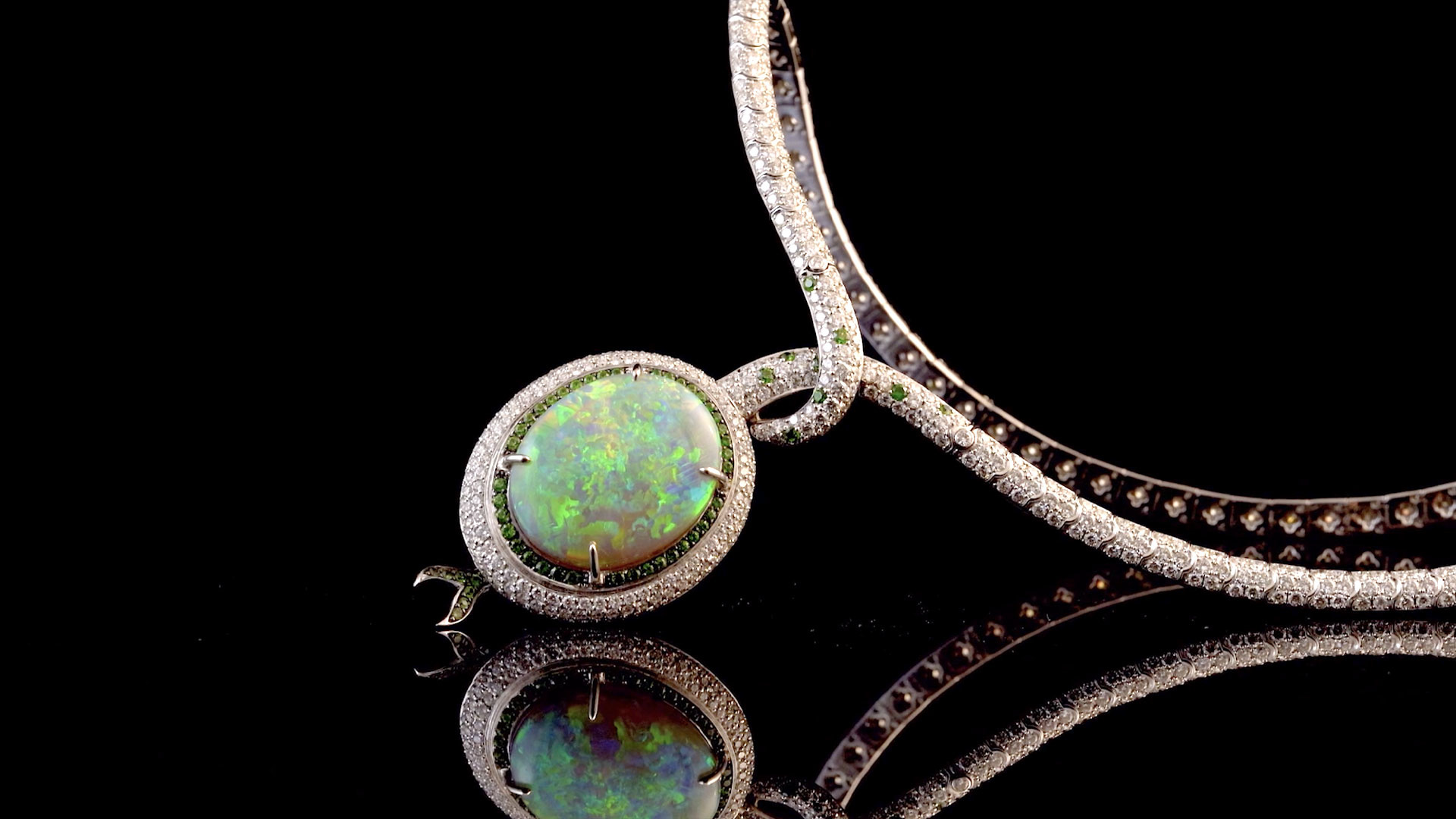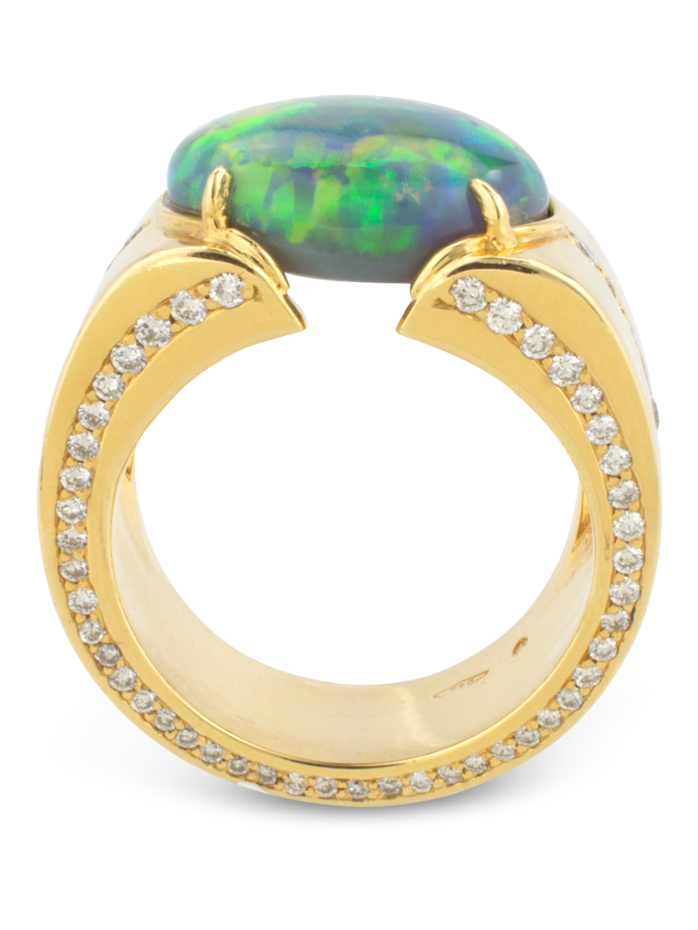
Opal, a hardened silica, usually contains 5 to 10 percent water in submicroscopic pores. Fine opal consists of a regular arrangement of tiny, transparent silica spheres. The formation and stacking of these spheres is what causes one of nature’s greatest phenomenon’s, ‘play of color’; the diffraction of light around the silica.
Opals form over millions of years. In Australia, opals date back to when the land was covered in ocean. When the water receded, silica filled cavities in the sedimentary rock. Over time the silica formed opal. The most common form of opal is known as white with the rarest being black opal. Black opal is derived from a natural solid opal which when viewed from the top has a play of color against a black, dark gray or dark body colored background.

Play of color is highly important in judging an opal. The color of the ‘fire’, its brightness and the pattern which it forms over the opal surface all help to categorize fine opal. Vivid red flashes of color are considered the most valuable followed by orange, green and blue. The brightness depicts the strength and intensity of the color. The brighter and crisper the fire the rarer and more valuable the opal. The pattern of the play of color; flashfire, pinfire or harlequin are also an identifier of its rarity and hence its value.
Black Opal
Black opal is the most coveted of all opal varieties and, at the high end of the market, the most expensive by far.
Few great black opals reach US dealers; instead they sell mainly in Asia. They are the most vivid rich blue and green play of colors.
The first Europeans to see black opal were a few ranchers who lived in Lightening Ridge, the area about seven hundred kilometers northwest of Sydney, in 1900. Lightening Ridge grew to be the most important opal field in the world and stands apart from other fields because its opal, with dark backgrounds, has no counterpart.



Caring for Opals
Simple measures are required to be taken to care for your opal.
Opals are made of 5-10% water. Using solutions that may cause the opals to dry out such as detergents, laundry soaps of any ammonia based product should not be used on opals. Drying out the opal causes crazing, fine hair line fractures in the stone. Simple measures such as not washing up, bathing, swimming, steaming with the opal can reduce the risk of Crazing.
Exposure to extreme heat will also dry out the opal resulting in a loss of iridescence and life to the stone.
Opals, such as with pearls, are enhanced when worn. The natural oils in the skin help to keep the opal moist which in turn maintains luster, play of color and the beauty of the opal.
Do not store your opal in a safe or vault for long periods of time. Dry storage areas like this will cause the opal to dry out.
It is commonly thought Opal is a soft stone. In actual fact, opal shares the same hardness as that of turquoise, lapis lazuli, tanzanite and moonstone.
Love and enjoy your opal and it will love and enjoy you back.

Shop our Black Opal collection Shop All ➤



